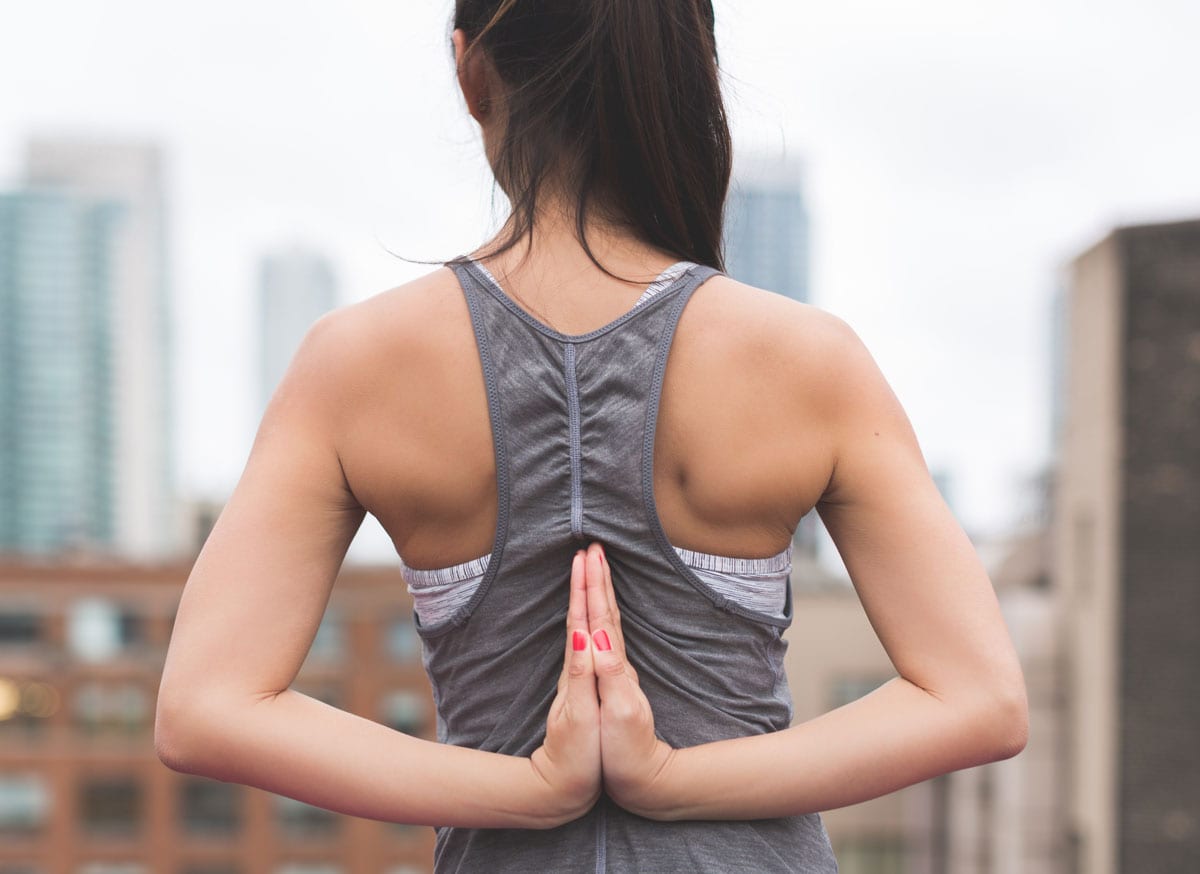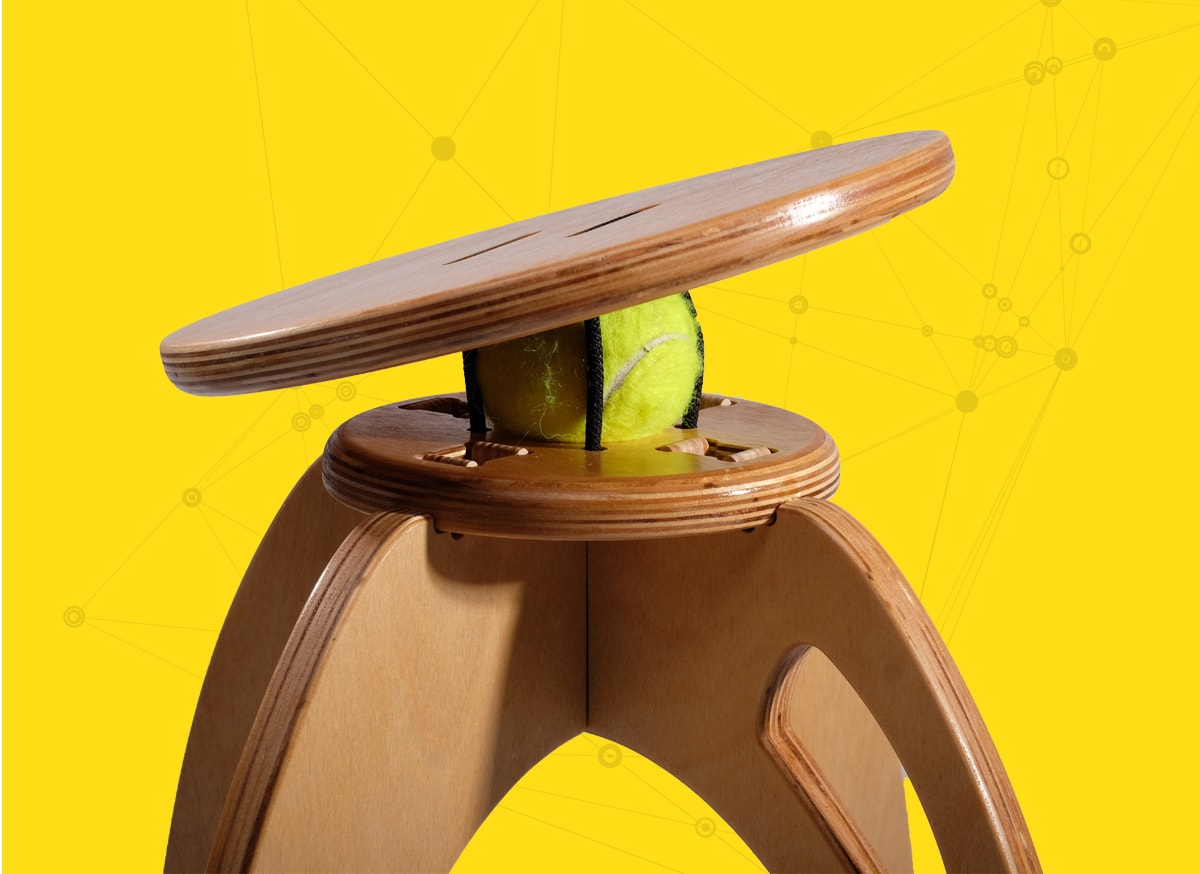On the TEDx Stowe stage we hoped to spark a conversation about active sitting in schools, and how with a little innovation, it can be done cheap, fast, and effective. If you’d like a copy of the brochure describing our TEDx talk, you can download it here. For more information on the ButtOn Chair project, please visit, buttonchairs.org.
TRANSCRIPT:
The spine
The human spine, your spine, is evolution’s masterpiece. Perfected over four billion years (if you count the prototypes) and in daily use for the last 3 million years, the spine is a marvel of design: 24 vertebrae, perfectly stacked, each just hefty enough to support all those above, and each connected to its adjacent vertebrae by six joints. This arrangement allows the spine to flex and extend, to bend side to side and to rotate, actions that in combination allow us to chase rabbits and run from jackals… all the while balancing an 11-pound head (!) on top of the seven delicate cervical vertebrae
Our spine allowed us to stand, to walk, and to run; it freed our hands to use tools, to hunt, and to create culture. Our spine made us human.

The spine and me
I’ve gone extra innings with the spine, taking it apart as a medical student and then putting it back together over a long career as a surgeon. And I have to say, the more time I’ve spent with the spine, the more amazing it is. In fact, it’s, well, … perfect.
But the spine fails!
So it comes as a great shock to learn that our spines fail most of us. And this failure is stark: 80% of Americans seek medical care for back pain at some point in their lives. For many back pain becomes a chronic condition, often treated with opioids, opening the door to the catastrophe of drug addiction. Back pain is also an immense financial problem, costing America $100 billion per year. That’s right up there with cancer or heart disease.
And we don’t even know why
But here’s the thing: Not only does the spine fail most of us, but it fails mysteriously: almost always X-rays, CT scans, all that stuff is normal. Heck, we don’t even know what’s hurting: the disks? Facet joints? Fascia? Muscles? We don’t know. It’s pretty clearly not tissue damage or inflammation, but what then? We just don’t know.
A clue
But here’s a clue: back pain seems not to occur where people still sit in traditional ways rather than on Western chairs. In Japan only 3% of people suffer from back pain; compare that to 80% in the US. The Japanese have the same spine we do, so, what’s going on?
Western Chairs are the problem
Well, … our office chairs are based on the notion that we require “support” to sit, so, we get the headrest, the backrest, armrests, the footrest, and then to restore something that looks more like normal posture we get the coup de grace, “lumbar support”. Unfortunately, we’re not being supported, we’re being restrained. Winston Churchill observed: “We shape our environment once, and then it shapes us forever”. We spend on average 11 hours a day in intimate contact with chairs, and they are reshaping us for the worse. Much worse.
What if…
But what if we started over with a clean sheet of paper, and redesigned the chair from the ground up…. What if we got rid of the headrest, the backrest, all that stuff… heck what if we got rid of the fixed seat? What would that look like? Is it even possible? ….

A solution
After a year of laughable prototypes I finally hit on this new geometric solid:
It’s the volume of intersection of two cylinders at right angles… think where my fingers overlap. Because this shape has two curved sides opposed at 90 degrees when placed between two surfaces it’s tippy in all directions.
Sitting on this rocker

Yes, but…
So it feels interesting, but is it accomplishing anything? Well, we don’t as yet have any double-blind crossover trial data, but here’s a story: We sometimes go down to the walking street in Burlington, Church Street, and put out a few of our chairs in the sun just to see what will happen. They draw people like flypaper, and usually folks first test the chair a bit, then they sit on it, then they’re startled, then their posture begins to change: their sternum comes up, head comes back balancing on C1, their shoulders relax, and their lumbar lordosis reasserts itself. Within minutes their sitting
A story
Anyway, one day a young woman, maybe 13 or 14, sat down on one of our chairs at the periphery. And just sat there: no phone, just blissing out in the sun. 2 minutes, 5 minutes, 10 minutes, 15 minutes. And then she got up and walked away. But after about 10 paces she turned and said, “You know, I think it makes me walk better”. The postural reset button, pushed again…
And pushback
Encourage by all this, I took a couple of chairs to a big academic ergonomic conference where lots of researchers were presenting papers on sitting and chairs. I happened to meet a guy who’s famous in the world of office chair design, and we had an animated conversation in which he talked chair design and I talked anatomy and physiology and anthropology and epidemiology… all those “ologies”. We swapped email addresses, and I didn’t think much more about it, but a few days later I got an email from this guy in which he confessed: “I feel awful. I’ve spent my life trying to create chairs so comfortable that people would never want to get up, but it turns out that sitting still all day is terrible for people’s posture and their health. But what am I supposed to do? We’ve convinced people that they need lumbar support, and now we can’t sell chairs unless they have lumbar support.” This guy, and really his entire industry, are trapped by their legacy, with no way forward.

Sitting without preconditions for folks without preconceptions
So, it seems our little startup is not actually making a better chair. We’re trying to upend the whole idea of what a chair is. This isn’t an easy lift, because everyone already knows what a chair is. They’re wrong, but this won’t an easy argument to win.
So, maybe we just need to start over with an entirely different audience…, one without preconceptions about what sitting is or chairs are, like, say, … say, kids? We took some chairs to a few schools and the kids really got into it: suddenly sitting involved movement, and kids love to move, … they instinctively know that sitting still all day is a bad idea; our chairs provided a sort of “sanctioned squirming”, a way to move without irritating every adult in the room…
The RODEO Chair
I thought this was an original insight, but it turns out that the idea of active sitting as “postural prophylaxis” for kids had already occurred to a friend of mine, Frode Skretting. He designed his RODEO chair specifically for use in schools in Norway. It’s beautiful and really very amusing to sit on

Free chairs?
So, what to do? Well, how about this: let’s make active chairs that are free…
No, really: We’ve designed a chair
So, an active chair for around $5 worth of plywood. Think of it: high school shop projects could finally produce something useful: an active chair a kid can use for years.
The coolest part
And here’s the coolest part: The plywood pieces are cut by a CNC router, a sort of demonic robotic chisel on speed.
Because the CNC router just follows digital instructions, this “chair” is really just a digital file. So we can literally email a chair, we can just sort of stuff a chair through the internet. And then anyone with a CNC router can “print” as many of these chairs as they wish. Just add a tennis ball and some bungee cord, and you have a classroom full of active chairs for a bunch of kids who need to be active.
A future for our kids
So, could we actually could give our children a future without back pain?
Thank you.
Photos by Jesse Schloff Photography | Video by TEDxStowe





2 comments
Turner Osler
Wallace,
Great to hear from you. Delighted that you find our ButtOn Chair project interesting.
We think our design is a great project for high schoolers: interesting because it touches a lot of fields (engineering, anatomy, physiology, health), a little challenging to execute, and a social mission underlying everything.
If you have a CNC router, plywood and tennis balls you’re almost there. Just go to the website that we created for our ButtOn Chair project (buttonchairs.org) and download the file that will tell your CNC router what to with the plywood.
Putting the chairs together is very simple (no tools beyond a rubber mallet) because all the joints are self locking).
Let me know if you have any questions; you can email me at: info@qor360.com
-turner
wallace L johnston
We work with the Amarillo ISD – AACAL (Amarillo Area Center for Advanced Learning-Pre-Engineering MENTORING alliance) to engage HS Seniors in meaningful Cap Stone research.
Today, I found your recent TEDX presentation on ACTIVE SEATING for Kids.
We Have access to CNC’s, Plywood and TENNIS BALLS – HELP!
Leave a comment
All comments are moderated before being published.
This site is protected by reCAPTCHA and the Google Privacy Policy and Terms of Service apply.